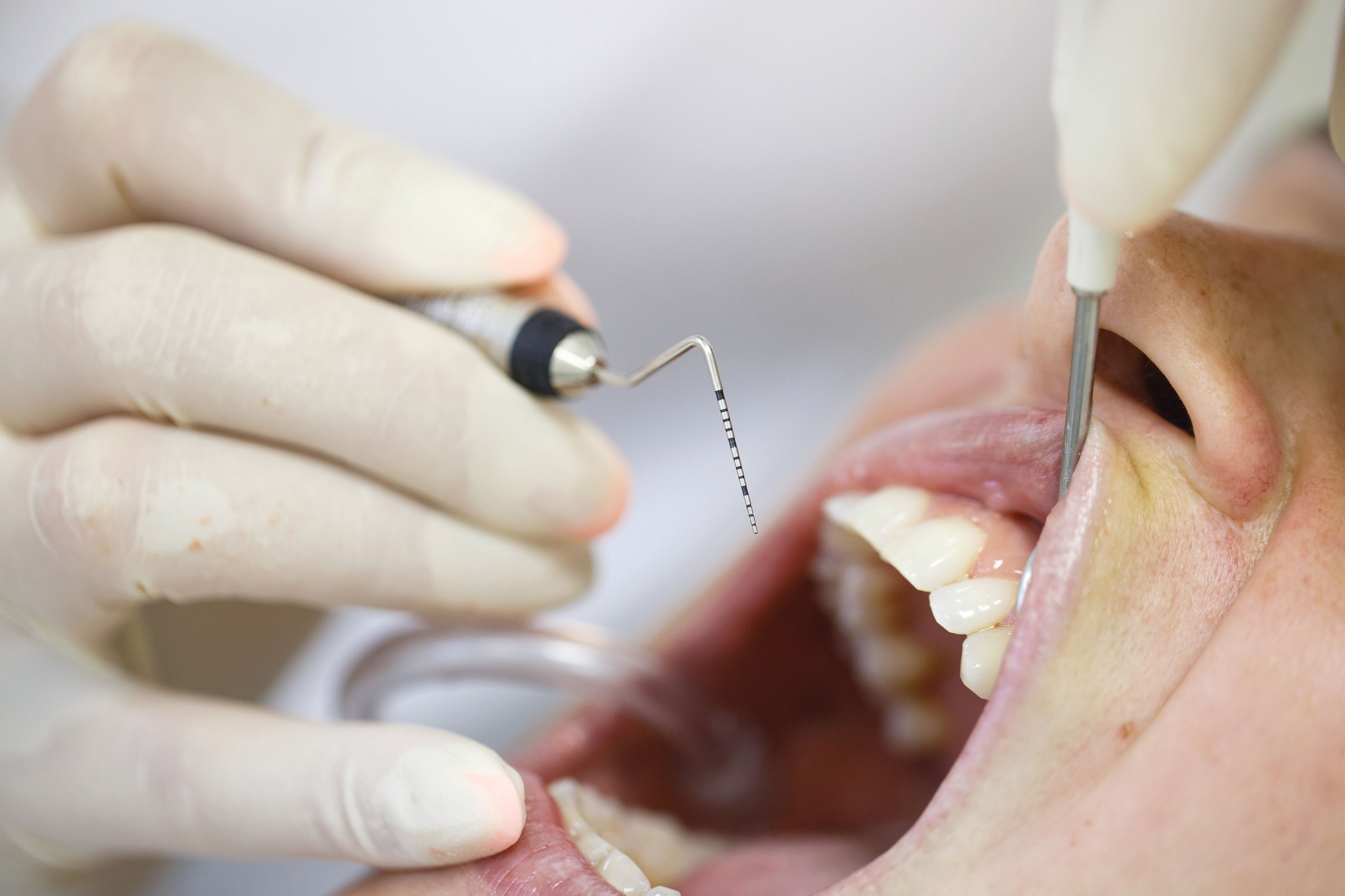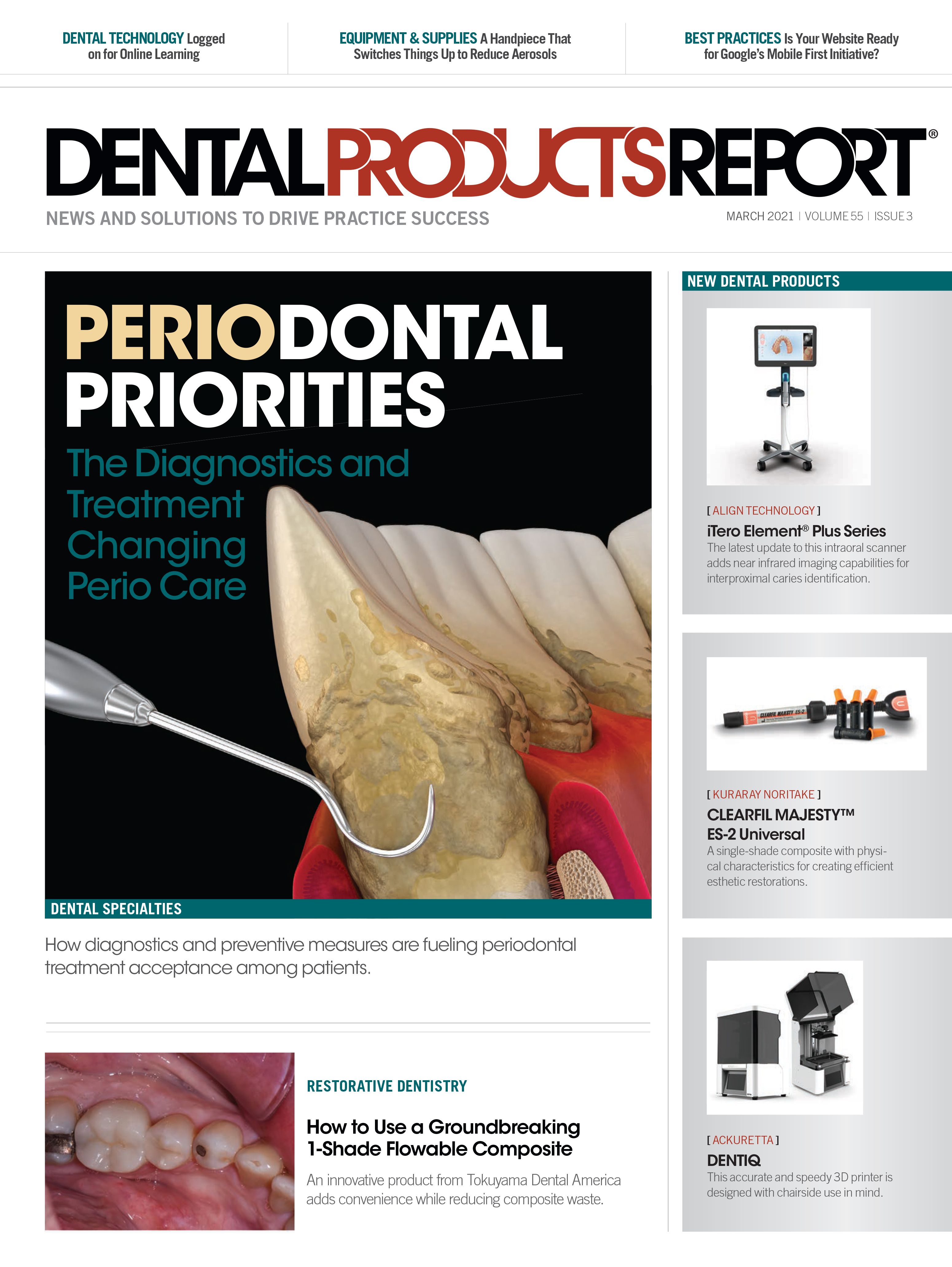The Changing Facets of Periodontal Treatment
Soft and hard tissue and patient habits make periodontal disease a multifaceted challenge.
©zlikovec / stock.adobe.com

I have seen many changes in periodontics. Younger doctors may find this hard to believe, but when I graduated a piece of advice instructors gave us was this: If you are considering buying an existing practice, be sure it has perio probes in the examination kits.
In the late 1980s and early 1990s, it was not uncommon to find offices that either did not perio probe or only did so occasionally. I suspect that because the focus was on restorative treatment (many patients had grown up without fluoride) and there was a lack of understanding of perio disease, treatment of the problem had been pushed to the back of the proverbial shelf.
Understanding the Mindset
Perio is not a thrilling topic, even to other practitioners. When we discuss dentistry among ourselves, it is rare for the conversation to turn to periodontal issues. It is much more exciting to talk about bonding science and emerging technology than it is to discuss scraping hard deposits from the teeth.
And there, I think, is where some of those earlier problems originated. Doctors in the generation before mine regarded perio treatment as only removing calculus from subgingival areas. There were even the Stockholm studies that showed once pocket depths exceeded 6 mm, it was practically impossible to thoroughly clean the root surfaces without laying a flap. Of course, flap surgery is painful and perio treatment began to get a bad reputation among the public.
Research and Expanding Knowledge
In the 1980s, periodontal disease became a hot topic for research. One of the great things about research is that it is frequently like a snowball rolling downhill. Once a subject becomes popular, more researchers explore it, and the knowledge base expands almost exponentially.
One of the best things to come out of this research is that periodontal pathogens were frequently found in, or contributed to, other disease processes. Suddenly, mainstream media outlets figured out that the oral cavity was connected to the rest of the body and began to report on how perio problems were contributing to heart disease and diabetes, for instance.
This shift of focus brought more interest in the subject. Patients, for perhaps the first time, began to understand the importance of periodontal health in overall health and quality of life.
Two Sides to Every Problem
As with any disease process, this one is multifactorial and requires more attention to detail than some other health problems. The most important component of treatment is patient motivation. Some individuals have genetics that let their bodies create more calculus and immune systems that do not fight the problem effectively. However, those patients are less common. Perio, unfortunately, is frequently a disease of neglect; a shift in personal habits is needed to effectively fight it.
The second big factor is the hard tissue side of the problem. Calculus must be located and effectively removed to prevent the foreign body reaction that causes the disease process. Not only is this removal intrinsic to success, but patient motivation again comes into play. The patient must be committed to a frequent recall schedule that allows the professional to maintain the calculus removal in the pockets.
The third big factor is one professionals had a harder time treating in the beginning, which is the soft tissue side of the equation. Bacteria from the subgingival deposits easily migrated to the soft tissues, and even when the hard deposits were removed the pathogens remained in the soft tissue side of the pockets, where they continued to trigger the inflammatory process.
Battling the Soft Tissue Side
If we can remove the hard tissue buildup that helps promote healing, what can be done about the soft tissue aspect? This speaks to why we are seeing more of an emphasis on light-activated types of treatment rather than chemical ones.
One of the original ideas for soft tissue treatment was chemical curettage. Some type of mild caustic chemical, usually citric acid, was placed into the pocket and used to remove the pocket lining. However, the clinical success was less effective than anticipated.
Enter the soft tissue laser. The soft tissue lasers in use in dentistry produce wavelengths attracted to dark colors. Some perio pathogens are dark-colored, and inflamed tissues turn darker because of increased blood flow in the area to activate the body’s infection-fighting processes.
These darker colorations create an incredible absorption of laser energy. Laser fiber optic tips are normally between 200 and 400 µm and can be easily placed into the pocket. Low energy pulses are then delivered into the area, vaporizing the inflamed tissues and bacteria. The concept is that when irritants and pathogens are removed from the root surface and the soft tissue surface, healing can take place in an environment devoid of potentially noxious materials.
Combination Therapy
To envision another step forward in this treatment, consider antimicrobial photodynamic therapy (aDPT) as a discussion point. It uses a combination of light-sensitive material (a gel) placed into perio pockets. A light source is introduced into the pocket. The gel absorbs energy from the light source and then the gel goes through a chain of photodynamic actions that release oxygen-free radicals. These free radicals quickly destroy the surrounding pathogens. The gel is a photosensitizer based on vitamin B2, curcumin, and hydrogen peroxide. It is a powder that is mixed with water to form the gel.
The gel is not an antibiotic, so no resistance can develop. That means the treatment can be performed when necessary. Studies have shown that this therapy combined with scaling and root planning (SRP) can eliminate more than 85% of pathogens.
This treatment concept comes from a company called CMS Dental based in Denmark. The light source used is the company’s FlashMax P7 light. This device is multifaceted. It can be used as a curing light that has an intensity of 5500 mW/cm2 (a phenomenally strong curing output). For the perio treatment, the device has different settings.
Used in the Biofilm Control mode, the light has an output of 7500 mW/cm2. However, this is not simply a case of increasing light intensity. To treat the pocket, the device also requires a special disposable tip. This thin, flexible, and clear plastic tip is designed to easily be placed into the pocket and allows the user to deliver the light to the critical areas it needs to reach.
The treatment can also be used with adjunctive probiotic therapy. The probiotic changes the makeup of the biofilm, making it less pathogenic and helping to reduce pocket depths.
Both laser disinfection and aDPT are effective soft tissue side treatments, but they require clean root surfaces and patient dedication on the maintenance level. Both treatments need effective scaling and root planing prior to using the light source, and vigilant home care to ensure a positive long-term prognosis.
Wrapping Up
As more research is done, we are seeing more connections between periodontal disease and breakdowns in other parts of the body. This is no longer speculation. It seems that practically every day there is a story in the media linking periodontal disease to things such as diabetes, heart disease, and Alzheimer’s disease. This information is driving greater patient interest and adherence to bettering periodontal health.
It behooves us as professionals to explore and implement treatment that helps us provide the better health we owe our patients.
